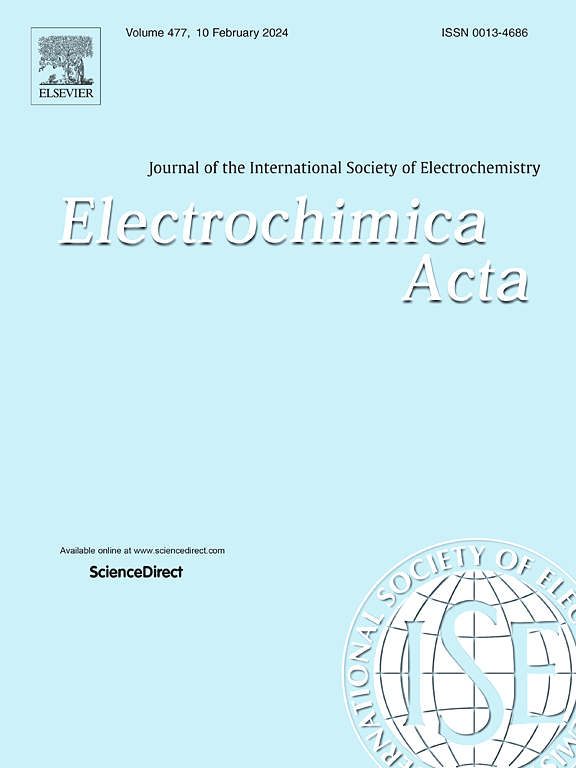镍冶炼厂渣电积铁用于可持续炼钢
IF 5.6
3区 材料科学
Q1 ELECTROCHEMISTRY
引用次数: 0
摘要
碱性电积是一种很有前途的可持续炼铁技术,与产生二氧化碳排放的传统路线相比,其特点是在低温下操作,降低了能耗。虽然赤铁矿一直是大多数研究的主要焦点,但只有有限数量的铁基原料作为电积的潜在原料进行了研究。这项工作的目的是首次评估β-FeOOH基残留物的增值潜力,使用无预处理电积。在90°C (0.025 A.cm-2)的10 M NaOH中进行的电还原实验获得了59%的法拉第效率,与纯赤铁矿(57%)相当,纯赤铁矿传统上被认为是绿色炼钢电浸的主要铁源。在105 ~ 130℃条件下,将电解液浓度增加到18 M,与赤铁矿相比,效率降低了约20%,显示出较低的铁矿质量。然而,在参考条件下,在10 M NaOH中-1.15 V的恒电位电积,成功地达到了前所未有的83%的法拉第效率,并伴随着铁矿质量的改善。这些结果突出了含有β- feooh的工业残留物通过电积直接增值的高潜力,有助于更可持续的炼钢过程。本文章由计算机程序翻译,如有差异,请以英文原文为准。
Iron electrowinning from a nickel refinery residue for sustainable steelmaking
Alkaline electrowinning is a promising sustainable ironmaking technology, characterised by operation at low temperatures and reduced energy consumption, in contrast to the traditional route which produces CO2 emissions. While hematite has been the primary focus of most studies, only a limited number of alternative iron-based raw materials have been investigated as potential feedstocks for electrowinning. This work aims to evaluate, for the first time, the valorisation potential of a β-FeOOH based residue, using pretreatment-free electrowinning. The electroreduction experiments conducted in 10 M NaOH at 90 °C (0.025 A.cm-2) achieved a Faradaic efficiency of 59 %, comparable to pure hematite (57 %), which is traditionally regarded as a primary iron source in electrowinning for green steelmaking. Increasing the electrolyte concentration to 18 M at 105–130 °C, decreased the efficiency by about 20 % in comparison to hematite, revealing a lower quality of iron deposits. However, potentiostatic electrowinning in the reference conditions, -1.15 V in 10 M NaOH, successfully reached an unprecedented 83 % Faradaic efficiency, accompanied by an improvement in the quality of the iron deposits. These results highlight a high potential of β-FeOOH-containing industrial residues for direct valorisation through electrowinning, contributing to a more sustainable steelmaking process.
求助全文
通过发布文献求助,成功后即可免费获取论文全文。
去求助
来源期刊

Electrochimica Acta
工程技术-电化学
CiteScore
11.30
自引率
6.10%
发文量
1634
审稿时长
41 days
期刊介绍:
Electrochimica Acta is an international journal. It is intended for the publication of both original work and reviews in the field of electrochemistry. Electrochemistry should be interpreted to mean any of the research fields covered by the Divisions of the International Society of Electrochemistry listed below, as well as emerging scientific domains covered by ISE New Topics Committee.
 求助内容:
求助内容: 应助结果提醒方式:
应助结果提醒方式:


